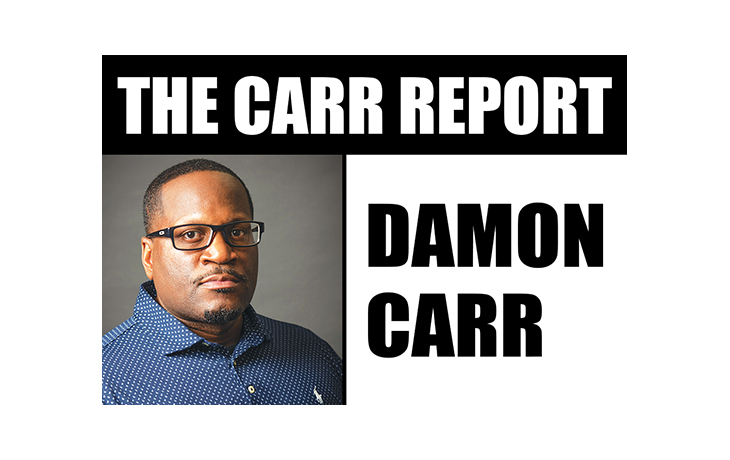Getty Images
by Damon Carr, For New Pittsburgh Courier
I need to find out strategies on how to lower my taxable income.
~ Steve
Damon says:
That’s the easiest question that I’ve received to date. Here’s what you do: March down to your human resources department and ask to meet with a payroll specialist. Inform the payroll specialist that in an effort to reduce your taxable income, you’d like a pay cut IMMEDIATELY! You don’t like that strategy, do you? I’m joking but here’s my point. You’re not looking to reduce your taxable income per se. You’re seeking tax advantage strategies to allow your money to grow and defer or avoid taxes. Here’s a couple of strategies that you can employ:
Maximize your 401k contribution: You can contribute up to $22,500 per year or $30,000 if you’re over 50 years old in a 401(k), 403(b), or Thrift Savings Account etc. Doing so will reduce your taxable income. More importantly, doing so increases your retirement savings so that when the paycheck stops coming in, you have a retirement nest egg you can pull money from.
Maximize your IRA or ROTH IRA contribution: You can contribute up to $6,500 per year to a Traditional IRA or Roth IRA. You can contribute up to $7,500 per year if you’re over 50. Certain rules apply to both regarding if you’re able to receive a tax deduction on a Traditional IRA or if you’re eligible to contribute to a ROTH IRA. Both are something to consider for tax advantage strategies.
Health Savings Account (HSA): If you have health insurance with a high deductible, you may be eligible to participate in an HSA. With an HSA, you can save or invest money in this account. In 2023, for someone who only has health insurance on him or herself, you can contribute up to $3,850 per year in an HSA. You can contribute up to $7,750 per year for family coverage. There’s a triple threat tax advantage here. The money you contribute is tax deductible. The money inside the account grows tax deferred. The money you withdraw from this account for medical purposes is tax free.
Create a business: If you own a business, you can convert some everyday expenses into partially or fully deductible business related expenses. For example: You have a cell phone you use daily. You open a business and you continue to use the cell phone for personal and business purposes. The portion of the time you use your cell phone for business is deductible as a business expense.
Thanks Damon!! The first two, I am doing right now. I could contribute more but I am paying off some bills. I’m trying to come up with an idea for a business.
I started too late in life. I have been through so many situations that I have had to use my 401k from previous jobs to stay afloat but I did have one that converted into a ROTH so I have that. I took your advice about having an emergency fund. So since January, I have saved $200 per month.
~ Steve

Damon says:
Steve, it sounds like you’re making the right money moves. Know this! We all have a story to tell. There’s no linear path to success—including financial success. The road is filled with roadblocks, obstacles, temptation and setbacks.
The key is to learn and grow from our own unique experiences. It’s never too late to start! Consider this: Most people never start. They work hard, make bad financial decisions, and wonder why they can’t get ahead. You’re taking the time to learn how to better manage your money. You’ve also learned what not to do from your mistakes.
********
Can you explain what a ROTH account is?
~ Nafeesa
Damon says:
There are two types of IRAs: Traditional IRA and ROTH IRA. IRA stands for Individual Retirement Account.
Traditional IRAs allow an upfront tax deduction but you’re taxed on both contributions and earnings when you withdraw money from it.
With a ROTH IRA, there’s no upfront tax deduction. When you withdraw money from it, both contributions and withdrawals are TAX FREE. This allows you to keep Uncle Sam’s palms off of your hard-earned money.
You can contribute up to $6,500 per year in an IRA – $7,500 if age 50 or older.
******
Aren’t there income limitations? You can’t contribute to a ROTH if you earn more than a certain amount of income? Correct? Or has that changed?
~ Tracy
Yes, there are some income restrictions with regards to using a ROTH IRA. For single filers in 2023, you can contribute up to $6,500 per year if you earn under $138,000. If your earnings are between $138,001-$153,000, the amount you can contribute is phased-out (reduced). For married filing jointly, you can contribute up to $6,500 each if your combined income is under $218,000. If your earnings are between $218,001-$328,000, the amount you can contribute is phased-out (reduced). If you’re filing separately, you can contribute to a ROTH if your earning is $10,000 or less. Note: If you’re 50 or over, you can contribute up to $7,500 per year in a ROTH.
For those who are fortunate enough to earn too much money to contribute to a ROTH IRA, there’s a little known loophole called a backdoor ROTH IRA.
This strategy involves contributing money to a non-deductible IRA. This IRA has no income restrictions. Once you contribute money to the non-deductible IRA, you can immediately convert it to a ROTH IRA. Many companies are offering a ROTH 401(k). There are no income restrictions with a ROTH 401(k).
(Damon Carr, Money Coach can be reached at 412-216-1013 or visit his website at www.damonmoneycoach.com)


